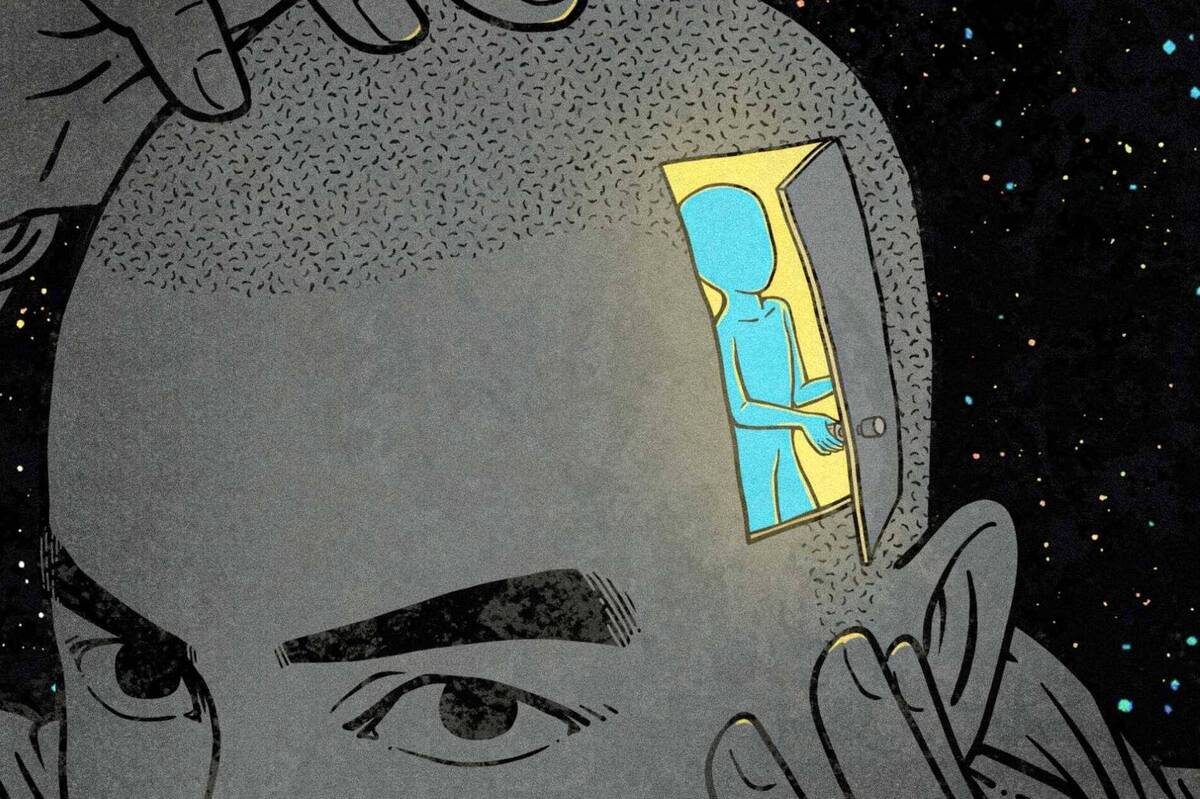Just as educators nationwide hunkered down for end-of-semester grading of written assignments in December 2022, a high school English teacher published an explosive article in The Atlantic. His argument in a nutshell? ChatGPT's AI technology has become so adept at writing basic essays on a variety of topics, that he fears his job has become obsolete. The responses to this argument have encompassed a full range—from pearl-clutching to indignation to utter sorrow and despair over the future of higher education. But in this essay, after briefly responding to the concerns that these latest AI developments have posed in the educational sector, I would like to use this development as the starting point to consider an under-explored question that it also readily suggests: what makes a human truly, well, human? In a world where our brains and bodies are fully or partially replicable in laboratory settings, this question has achieved a new level of metaphysical urgency.
Lest anyone think that The Atlantic was overly prone to sensationalism here, it is worth noting that both Inside Higher Ed and The Guardian also covered these advances in AI this fall, with similarly dire predictions and conclusions. These technological developments, they argued, could mean not only the death knell of high school English but also potentially the end of similar classes or assignments in college, unless those who teach writing dramatically change both their instructional methods and the kinds of assignments that they ask students to write to avoid a new and undetectable method of plagiarism.
But plagiarism is not the chief concern in the coverage. An additional and understandable fear is interwoven into some of these analyses. In these our dark days of continued attacks on the humanities at all levels of instruction, might not some institutions take these advances as a justification to drastically scale back the teaching of writing, deeming it now unnecessary? If a machine could write a much better cover letter or essay on a basic topic than an average human could, why do we still need English classes? After all, AI is the way of the future, so let us just push these kids into more STEM classes instead, right?
It is striking to consider, in the context of the apocalyptic tone of the present conversation on AI’s new achievements in writing, that there are many other areas in which technology has outdone most average people. In particular, all of the mathematics that children learn in the first six or so grades involve mastering arithmetic—those basic functions that any calculator can achieve as quickly as you input them. By contrast, a complex long-division problem might take a typical sixth-grader a hot minute, to use a unit of time particular to my region of the US.
Similarly, one could argue that learning to play a musical instrument or chess or even learning a foreign language nowadays is utterly unnecessary. After all, a computer knows more languages than any human can master in a lifetime. It can also play chess so well and at such different levels that one could even adjust its competence to the level of the player—elementary, intermediate, or advanced—to provide an appropriately fair match.
Strikingly, I have seen no arguments against the continued teaching of arithmetic in public schools. To the chagrin of most students everywhere, I boldly presume, no authorities in charge of setting curricular outcomes seem to think that the availability of cheap calculators and computers has made the teaching of math unnecessary and obsolete. Music instruction and chess playing among people likewise continue apace. And while foreign language instruction is an area in which most American schools lag behind their European counterparts, Google Translate has not replaced it.
Technology, it seems, can become our companion, rather than rival, in performing creative and critical thinking tasks, enhancing rather than replacing its human partners. And such a functional marriage is, in a sense, what the recent coverage of AI advances in essay writing has advocated as well. The technological advances simply require adaptation in how writing is taught.
And yet, while the coverage of the topic so far has focused on defending the value of writing instruction and providing prescriptive solutions for updating it in light of technological advancements, I think that an important dimension of the topic has been overlooked. Specifically, if we look at this particular advancement as part of the larger picture of other technological advancements of the twentieth and twenty-first centuries, the key question they raise is: what does it mean to be human? For this question, we need to look to two other areas of technology where significant technological advancements have been made—namely, neuroscience and human reproduction.
While some sectors of the education world have been panicking recently over the AI advancements in essay writing, another technological development has more quietly and infinitely more insidiously challenged certain premises used by some to define personhood. I am speaking here of brain organoids—effectively, brain tissue grown in a lab that is showing promise in potential, albeit still well down the road, to create real brains apart from human beings. Designed originally for medical testing purposes, these bizarre entities, real live brain cells but not brains, echo the classic science-fiction-style “brain in a vat” hypothesis beloved in introductory philosophy courses.
When the “brain in a vat” hypothesis was first formulated, it was, of course, merely a thought experiment. But we live now in a world where the ability to grow brain cells in a lab echoes a little too uncomfortably the science fiction plots of real live human brains in vats, capable of complex thinking, including but not limited to composing essays, completing mathematical calculations, and playing chess at world championship levels. Correctly programmed, they could also compose music and translate to and from any world language, living or dead.
Let me be clear, brain organoids in their current state are not capable of performing such tasks or functions. And yet, they make many people appropriately uncomfortable, raising questions about their ability to think or have a consciousness. The answer to both questions is, by the way, a firm NO. But even if these artificially grown lab cells cannot think or have a consciousness, operating entirely individually as true real live brains in vats, their existence reminds us of the swiftly moving pace of scientific advances. Advances only imagined a century ago can be very real today. Will people a century in the future say the same as they look back?
Imagine a future where this becomes a reality: science has created ways to grow lab-grown brain tissue that is smarter than humans, or at least infinitely more knowledgeable. And so, if humanity and personhood are defined as the presence of brain function—a criterion commonly used in making decisions for keeping patients on life support or taking them off from it—these real future brains in vats will be not just regular people but will also be even more fully human and perfect than any of us.
But wait, if you think this notion is scandalous, there is more. And this more is real already now. Right now, lab-grown brain cells are showing potential for use in medical procedures, and maybe someday lab-grown brains can fully replace our brains. But what about our bodies?
It is not only our thought process and some levels of creative thinking that modern AI and potentially medical technology can replace. Scientific advances in reproductive technology have already rendered our bodies disposable and unnecessary. When Aldous Huxley first published his dystopic novel Brave New World, the world he described, of babies created in artificial laboratory settings and grown until “birth” in artificial wombs, was merely the product of his imagination.
Today, however, we live in a world where the technology Huxley merely envisioned is very real, and threatens to divorce reproduction from the act of procreation with consequences that are likely to be as catastrophic for the human soul and the valuing of human life as suggested in the novel.
With our bodies and brains both subject to replacement by modern technologies that will only continue to advance by leaps and bounds, the question that we can no longer avoid is: what is a human anyway? What makes us human? What is there about us that makes us special in a way that no technology can replicate? This is a question to which no adequate physical answer exists. For answers, in this case, we must turn to the metaphysical.
Scientific advances of the past century show very clearly that to understand the preciousness of humanity we cannot look to science and its ever-moving needle of developments, which can replace us, performing anything that we can do, but much better, at least from a technical standpoint. Our humanity does not lie in some sort of degree of perfection of our chess playing or our essay-writing or mathematical prowess. To understand our preciousness, rather, we must look to God in whose image each of us has been created. The imago Dei and the understanding that each of us has been created with a soul, defies all modern scientific explanations and laboratory experiments.
Scientists today can play God, as some have called the scientific processes of creating lab-grown brains or other body parts, or even entire beings through cloning. Human cloning, in fact, is now possible, even as much of the world has rightly deemed it unethical. But we cannot replicate the unspeakable beauty of creation that God could speak into being simply by virtue of being God. Our souls that long for this relationship with God, which instinctively know their true purpose, are the only aspect of our being that will never be able to be grown in a lab. Guaranteed.
Ever since Eden, human existence was defined by thought and relationship. First and foremost, this has meant each image-bearer’s relationship with God. Created through divine fiat, furthermore, was the marriage relationship of the first man with his wife. It is in the context of these relationships—of humanity with God, and of families and of close friends with each other, all of them cherishing and treasuring each other’s humanity in all its imperfections—that writing and all creativity can flourish in this entirely and wholly human space, where AI and other similar modern technologies are neither welcome nor necessary.


